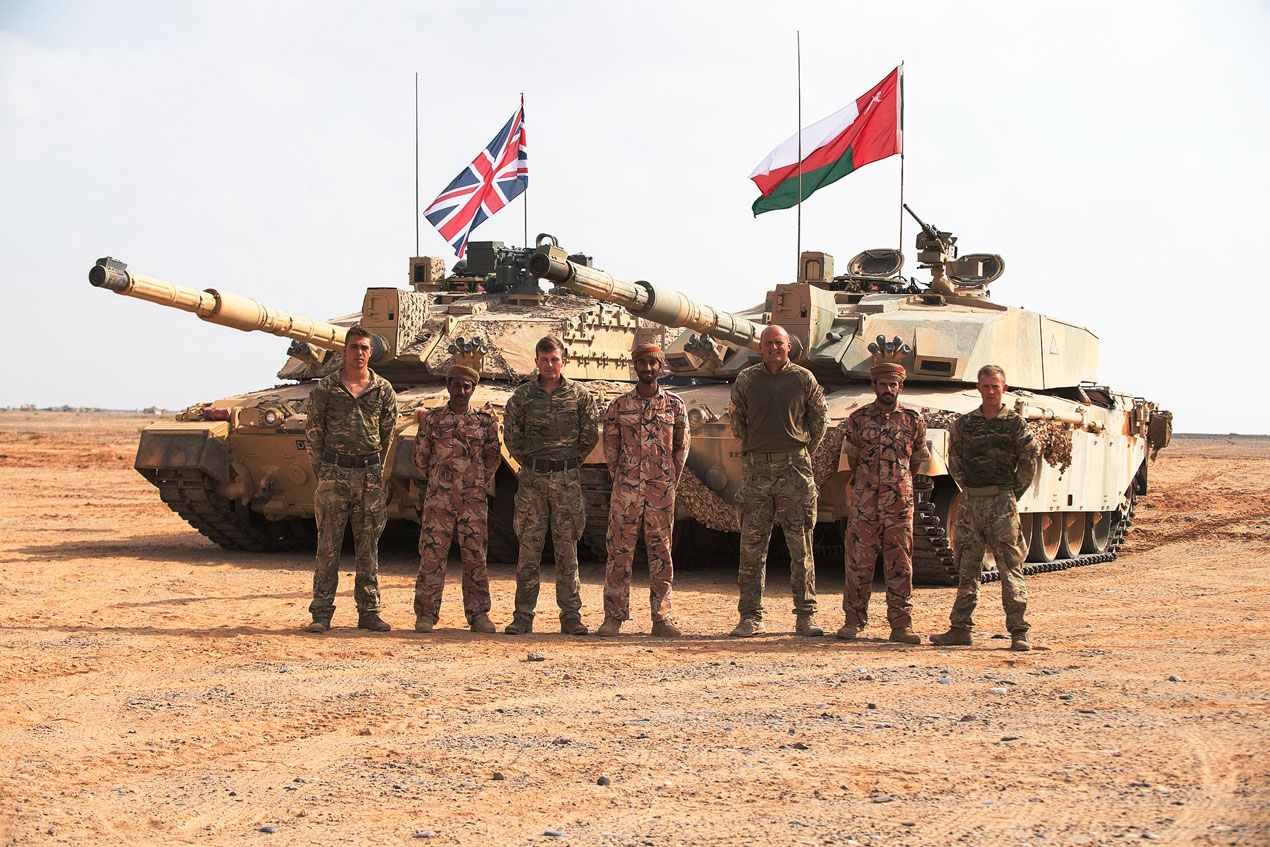UK tanks and tank regiments are falling in numbers
Tank regiments and numbers are in decline in the UK, which has less tanks in service than Cambodia.
Anita Hawser
27 April 2019

The main battle tank is an iconic symbol of an army's power on the battlefield. It provides ground forces with mobility, protection and firepower, all on a single platform.
Yet, in countries like the UK, the number of tanks and tank regiments are in decline. “...[The] number of Challenger 2 main battle tanks in frontline service will further reduce, from three battalion-sized regiments to two, with one regiment swapping its tanks for Ajax,” Ben Barry, Senior Fellow for Land Warfare at the International Institute for Strategic Studies wrote in a May 2017 Military Balance Blog.
To put things in perspective, in the 1990s, there were four tank regiments in the British Army, which had approximately 800 tanks at their disposal. Now defence chiefs have announced plans to “mothball” a third of the Army's tanks, which will leave it with even fewer tanks than Cambodia, according to reports.
According to rankings compiled by Global Firepower, Russia has the most number of tanks, including light tanks, with more than 21,000, followed by China with approximately 13,000 and and the US with more than 6,200. The UK comes 49th in Global Firepower's rankings with just 331 tanks.
The nature of warfare has certainly changed calling for more mobile, rapid response and lighter vehicles; not heavier, armoured tanks, which were a dominant feature of the Cold War. With the concept of the new Strike Brigades for the British Army coming out of the 2015 Strategic Defence & Security Review, the focus is on enabling the Army to “cover a wider battlespace with economy of effort,” hence the focus on lighter armoured vehicles like the Ajax and a new 8x8 wheeled Mechanised Infantry Vehicle.
According to Dr. Jack Watling, a research fellow in Land Warfare at RUSI, under the Army's Strike Brigade concept, the envisaged deployable force includes 112 Challenger 2s. With only 148 Challenger 2 tanks being upgraded (out of a total of 227) as part of the Challenger 2 Life Enhancement Programme (LEP), Watling says keeping 112 “ready to go” will be a serious challenge. “It also leaves no significant reserve to replace destroyed platforms,” he writes in a recent article for RUSI's website.
Some even question whether the Challenger 2 LEP is the best use of limited MoD resources. Defence industry consultant and ex-British Army officer Nicholas Drummond posed these questions in a June 23 2018 blog post: “Given many other land warfare priorities, does an upgrade programme make sense? Will we ever use tanks in combat again and does extending the life of Challenger 2 represent good use of a defence limited budget?” The UK National Audit Office has identified a £20 billion shortfall in the MoD’s Defence Equipment Plan (DEP) 2017–2027 over the next decade.
Some argue that a “credible MBT” is still needed if the British Army is to ever come up against a “peer enemy.” In light of the perceived Russian threat on NATO’s Eastern flank, the belief is that there is no time to develop a next-generation tank, which may not be ready until the earliest 2030.
“The Challenger 2 Main Battle Tank provides the UK’s only guaranteed 24-hour, all weather mobile, protected precision direct fire, anti-tank manoeuvre capability,” a UK MoD spokesperson told Defence Procurement International. “The MoD is investing £53 million in the ongoing Assessment Phase of the [LEP] project to develop solutions to upgrade Challenger to ensure it will continue to be a battle-winning asset for the British Army.”
But if a war was to kick off tomorrow on NATO's Eastern flank, Watling says the British Army's Challenger 2 tanks would have to be transported 2,000 km, which based on current projections, is likely to take 60 days for the Army's 'heavy' forces to reach NATO's Eastern border.
Other than committing to upgrading all of the Challenger 2 tanks, or positioning them closer in a country like Poland — both of which are expensive options — the other alternative , says Watling, is for the British Army to embrace lighter and more adaptable vehicles, which arguably it is with the Ajax programme. However, its investment in the Challenger 2 LEP suggests it is also hedging its bets on heavier armoured tanks continuing to play a role on the battlefield for the next 15 to 20 years.
“In 30 to 50 years time, there will still be a need for a ground-based mobile direct-fire weapon system,” says Simon Jackson, campaign leader for Challenger 2 at BAE Systems, “which will involve some level of taking control and holding ground.” However, with the growing emphasis on keeping the soldier out of danger on the battlefield, many foreshadow a greater role for robotics or remotely operated weapon systems in future.
“I don’t believe [robotics] will be adequately mature enough in the next 10–15 years,” says Jackson. “So there will still be a need in the meantime for an MBT,” which he says is borne out by the success of tanks in recent conflicts in Syria, Iraq and Ukraine.
Most of the current generation of tanks (Challenger 2, Leclerc, Leopard 2 and the US’s Abrams) are scheduled to go out of service from 2035–2040. What will replace them is likely to be a topic of much debate amongst politicians, who must not only look at the question of affordability, but also Britain's place in the world and its national security priorities.